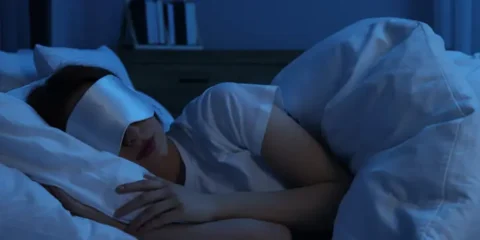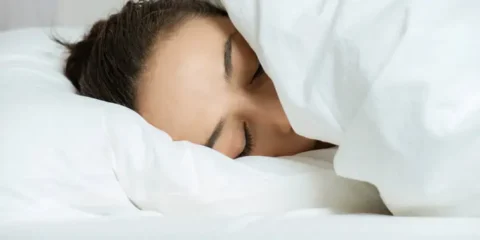Sleep disordered breathing involves intermittent reductions in airflow or respiratory effort during sleep. These disturbances are characterized as apneas, hypopneas, or respiratory effort-related arousals (RERAs).
While hypopneas and RERAs share some similarities, there are key differences in how they are defined and identified. Understanding these distinctions is important for accurately diagnosing and treating sleep-related breathing abnormalities.
What is Respiratory Effort-Related Arousal (RERA)?
A Respiratory Effort-Related Arousal (RERA) refers to a sequence of breaths lasting at least 10 seconds characterized by increased respiratory effort leading to an arousal from sleep.
However, RERAs do not meet the criteria for apneas or hypopneas which require specific decreases in airflow or oxygen levels. The effort to breathe against airway obstruction produces restorative sleep fragmentation.
What is Hypopneas?
Hypopneas involve at least a 30% reduction in airflow for 10 seconds or longer accompanied by a decrease in oxygen saturation of 3-4% or an arousal.
By definition, hypopneas must meet quantitative airflow and oxygenation criteria while RERAs are identified based on respiratory effort against obstruction leading to arousals.
Characteristics and Causes
RERAs manifest as a crescendo pattern of progressively more forceful breathing efforts against airway resistance. The increased work of breathing generally does not significantly impact oxygen levels but leads to cortical arousals that disrupt sleep.
RERAs are associated with snoring and conditions like obstructive sleep apnea characterized by repetitive collapse of the upper airway.
Hypopneas demonstrate reduced airflow caused by partial upper airway narrowing. Breathing becomes shallow with slowing of the respiratory rate. This often triggers arousals or intermittent oxygen desaturation. The cyclical obstruction patterns seen in obstructive sleep apnea can fluctuate between hypopneas and RERAs.
Both event types share underlying causes related to anatomical structures prone to collapse like the soft palate, tongue base, and pharyngeal walls. Enlarged tonsils, receding chin, and obesity increase susceptibility to RERAs and hypopneas by narrowing the airway lumen.
Measuring and Identifying
Polysomnography allows for detailed recognition of RERAs based on increases in respiratory effort masked from airflow channels.
This effort is detected by respiratory inductance plethysmography bands placed around the chest and abdomen to measure movement. Polysomnography also tracks electroencephalographic changes consistent with cortical arousals.
The number of RERAs per hour determines the respiratory disturbance index (RDI), parallel to the apnea-hypopnea index (AHI) based on hypopneas and apneas.
An elevated RDI along with excessive sleepiness and fatigue can indicate increased respiratory effort from upper airway resistance even with a low AHI.
Symptoms of snoring, choking sensations at night, and daytime sleepiness may distinguish RERAs associated with increased work of breathing. However, polysomnography remains essential for quantifying the number of events and guiding treatment.
Impacts on Health and Sleep Quality
Both RERAs and hypopneas can significantly fragment sleep and impair restorative deep sleep stages. Frequent arousals prevent continuous sleep cycles.
The effort associated with RERAs has been linked to hypertension, arrhythmias, and glucose intolerance even without major oxygen desaturation.
Chronic sleep deprivation from repeated respiratory events is associated with fatigue, headaches, mood changes, cognitive dysfunction, and decreased work performance. The combination of RERAs and hypopneas contributes to the severity of sleep disordered breathing and related health risks.
Treatment Considerations
Effective management of respiratory effort-related arousals and hypopneas centers around identifying and addressing their underlying obstructive pathophysiology.
By accurately quantifying these flow-limited respiratory events through comprehensive in-lab polysomnography testing, clinicians can classify a patient’s severity and guide individualized treatment planning.
Positive Airway Pressure Therapy
CPAP, BiPAP, and APAP devices deliver pressurized air through a nasal or full face mask to splint the airwall open during sleep. This helps reduce airway collapse and supraglottic narrowing associated with RERAs and hypopneas caused by obstructive events. PAP aims to stabilize breathing through the night and reduce respiratory effort-related arousals.
NightLase®
NightLase® offers a patient-friendly solution through its non-invasive laser-assisted therapy.
NightLase® uses a gentle Erbium: Yag laser to painlessly and superficially tighten tissues in the mouth and throat during routine dental or medical appointments. By delicately contracting collagen in the soft palate and tongue, it can help decrease bothersome snoring vibrations and reduce airway blockages underlying sleep apnea episodes.
The NightLase® treatment is performed without anesthesia and causes minimal discomfort. Patients can resume regular activities right away. A full course consists of three to five sessions over six to ten weeks to achieve results. Studies show improvements in reported sleep quality and reduced partner accounts of snoring may last up to one year for many.
By helping open airways and lessen disturbances, NightLase® provides an easy option that can enhance quality of life. Both providers and patients consistently report satisfaction with its gentle, effective approach. It represents exciting technological progress resolving challenging health issues in a minimally disruptive manner.
Oral Appliances
Custom oral appliances such as mandibular advancement devices work by protruding the lower jaw and tongue base forward to increase retropharyngeal space. This can improve airway patency and potentially resolve mild-moderate OSA when PAP is not suitable. Periodic follow-ups are needed to ensure proper fitting as the dental structure changes.
Surgical Options
Palatal stiffening procedures like UPPP involve reducing soft palate movement to prevent vibration. Adenotonsillectomy may also provide relief in select patients with RERAs or hypopneas caused by anatomical obstructions at the airway level that are addressed through these interventions.
Supplemental Oxygen
Nocturnal oxygen delivered via nasal cannula can help compensate for intermittent oxygen desaturation seen with particularly severe hypopneas by preventing hypoxemia-induced arousals. This may offer relief of associated symptoms.
Diagnosis and Management
Both RERAs and hypopneas must be accurately measured through in-lab attended PSG with essential respiratory effort channels to quantify event severity and guide appropriate individualized treatment.
Polysomnography for Comprehensive Diagnosis
Diagnosis requires in-lab video polysomnography (PSG) monitored by a certified sleep technician.
PSG allows precise measurement and classification of RERAs, hypopneas and other events through multiple essential respiratory effort channels like thoracoabdominal belts and nasal pressure cannula. Home sleep tests lacking these channels may misdiagnose flow-limited events.
Detailed PSG enables characterization of respiratory pattern, desaturation degree, respiratory effort, and arousal association critical for determining obstructive physiology severity and treatment planning. Respiratory polygraphs can miss subtle RERAs and lead to undertreatment of underlying upper airway resistance syndrome.
Addressing the Obstructive Sleep Pathology
Effectively managing the obstructive sleep pathology through individually optimized therapy aims to reduce cardiovascular risk over time by limiting repetitive intermittent hypoxia, hypercapnia, and sleep fragmentation-induced physiological stress responses.
This may also improve neurocognitive functioning and quality of life by promoting consolidated, restorative sleep.
Follow-Up Care and Multi-Modal Management
Close physician follow-up assesses treatment response objectively through PSG or home monitoring. Multi-modal care including weight management, exercise promotion, and lifestyle modifications may augment therapeutic gains.
Comprehensive diagnosis and management following RERA and hypopnea identification helps mitigate associated health impacts.
Distinguishing RERAs from Primary Snoring
While snoring is commonly associated with RERAs, the two have key differences.
Primary snoring indicates vibration of the airway tissues without metabolic or physiologic consequences.
RERAs involve increased respiratory effort against airway resistance that disrupts sleep architecture through arousals.
Not all snorers have sleep apnea or RERAs. The crescendo snoring pattern with RERAs reflects progressive narrowing of the airway lumen during inspiration. Detailed polysomnography is required to quantify RERAs rather than relying solely on snoring sounds.
Pathophysiology of RERAs
The pathophysiology underlying RERAs provides insight into the associated respiratory effort and arousals. As the upper airway progressively narrows during inhalation, higher negative intrathoracic pressure is required to maintain airflow. This prompts cortical arousals before oxygen desaturation occurs.
Awakening to recruit upper airway muscles opens the airway and resets ventilation. However, the recurrent arousals prevent continuous sleep cycles. RERAs reflect a state of increased airway collapsibility and pharyngeal resistance distinct from routine snoring.
RERA Impact on Women
While obstructive sleep apnea is more prevalent in men, RERAs occur at similar rates in both genders. This may relate to differences in airway anatomy and collapsibility. RERAs can significantly impair sleep quality in the absence of overt apneas and hypopneas.
In women with unexplained insomnia or fatigue, increased attention to RERAs during polysomnography can identify subtle breathing abnormalities missed by apnea-hypopnea index alone. Diagnosing RERAs may explain sleep disruption in female patients reporting tiredness despite low AHI.
RERA Severity Grading
RERA severity is sometimes classified using the respiratory disturbance index:

However, any RERAs in a symptomatic patient warrant consideration of treatment. Even minimal sleep fragmentation from airway resistance can impair sleep quality and health outcomes.
Pediatric RERAs
While less studied in pediatric populations, RERAs do occur in children. Adenotonsillar hypertrophy is a common cause of increased upper airway resistance and obstructive sleep apnea in children.
Eliminating underlying obstruction through surgery may reduce RERAs. Monitoring children for snoring, disrupted sleep, and daytime sleepiness can identify potential RERAs needing further evaluation.
Conclusion
While RERAs and hypopneas both indicate increased upper airway resistance during sleep, RERAs are distinguished by greater respiratory effort without definitive airflow or oxygenation criteria.
Detecting RERAs is important for determining the true severity of sleep disordered breathing beyond the apnea-hypopnea index. Comprehensive treatment aimed at minimizing all respiratory disturbances can improve outcomes and reduce associated health risks.










